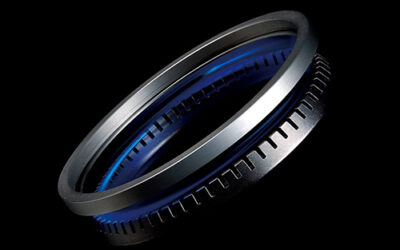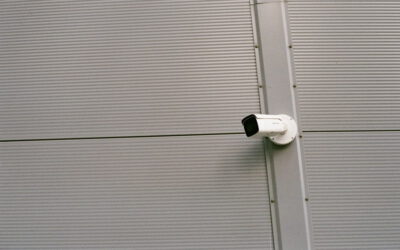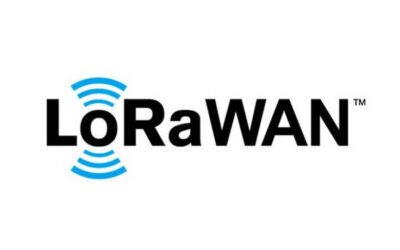Smart Sensors – Key Factor for the IoT

We are surrounded by objects that become “smarter” every day. Smart thermometers, smart fitness trackers, smart toasters, and thousands of other intelligent devices connected to the web as part of the Internet of Things (IoT) are created to make the life easier and more convenient. Smart sensors are the technology that makes IoT so valuable for everyday and industrial use. But what is smart sensor, and how does it perform its tasks? Smart sensing technology allows devices to monitor conditions of the physical environment, such as temperature, lighting, airflow, humidity, moisture, smoke, heart rate, water use, motion, mass, etc.
Smart sensors connect raw base sensors to integrated computing resources that allow the acquired data to be analyzed. Sensors collect specific data and transform them into measurable electrical signals, which are then processed by microprocessors. As a result, users receive information in a digital format, which can be used to change the environmental conditions if needed. An essential feature of an IoT sensor is that it can be connected to the Internet or a local network (e.g., other smart home devices), facilitating communication with external devices and easier access to data.
For example, a smart motion sensor can sense a person in the house and send signals to other devices. The lighting and energy use can be adjusted to create desired environmental conditions when someone enters the house. In this way, smart sensors act as crucial components of the IoT that allow for highly effective data collection and use. They allow devices to “talk” to each other meaningfully and help people with particular tasks.
The main features of smart sensors as part of IoT, which differentiate them from traditional sensors, are as follows:
- Small size
- Self-validation and self-identification
- Low power demand
- Self-diagnostic
- Self-calibrating
- Connected to the Internet and other devices
Where to Use Smart Sensors?
Smart sensing is a flexible technology that can be adjusted to dozens of different needs. Let’s list the main types of smart sensors and their application.
- Temperature sensors. Smart temperature sensors embedded in hardware monitor environment temperature or a hardware component’s temperature and can provide a signal or even perform a corrective action. This type of sensor is widely used in the industrial setting, where it helps identify and prevent overheating of industrial equipment. Another industrial example of their use includes refrigerators and freezers, which can remotely track and manage the temperature. In smart homes, temperature sensors embedded into smart thermostats can also help maintain a set temperature remotely, allowing users to adjust heating and reduce power consumption. In addition, temperature sensors can enable more effective fire detection.
- Level sensors. This type of sensor is well-suited for industrial needs. Level sensors detect the level of substances in bins, containers, tanks, etc. Many types of level sensors are designed to collect the data about liquids, powders, assorted objects, and other substances. Level sensors are applied in water management, waste management, food and beverage industry, pharmaceutical industry, diesel fuel gauging, leak detection, mining, and many other spheres.
- Motion sensors. This type of sensors detecting movement is used in various security applications, such as ticket gates, intruder alarms, entryway lighting, security lighting, etc. For example, a smart outdoor motion sensor can collect the data about movement near the house and switch on lighting when someone approaches the building. A smart home door sensor, in turn, can help trigger the security system alarm when someone tries to break in.
- Pressure sensors. A computer sensor detecting pressure helps monitor the pressure of fluids (e.g., water, oil) and gasses in a pipeline, thus helping to identify the leaks and flow control issues timely. In this way, pressure sensors play an essential role in quality control and energy and resource conservation.
- Infrared sensors. Designed to measure infrared radiation, these sensors collect the data about all surrounding objects emitting heat. As a result, they can be used as proximity sensors, detecting the objects that approach the device (e.g., a person entering the building). Infrared sensors can be used to detect a flame, monitor blood flow during the surgery, detect heat leaks in industrial facilities and buildings, and so on. Night vision devices are also based on this type of sensor.
- Proximity sensors. Similar to motion and infrared sensors, this type of sensing technology helps detect the location of an object or person. Proximity sensors are used in automated production lines, industrial conveyor systems, smartphones, robot collision detection, etc.
Sensors and Data Acquisition
Smart sensors are a sophisticated technology allowing for the collection of timely, relevant, and accurate data. Although smart sensors can perform processing tasks and transmit the collected data, their primary function is the data acquisition. Take, for example, smart agriculture devices. Smart sensors embedded into these devices measure important parameters related to the crop yield, including temperature, soil moisture, humidity, light intensity, etc. They allow people to collect and analyze the data in real-time and adjust the environmental conditions if needed. Conducting data acquisition manually would be too time-consuming in this setting, so smart data acquisition contributes significantly to greater efficiency.
The data acquisition capacity of smart sensors is invaluable in the industrial setting. Industrial smart sensors embedded into industrial hardware can facilitate industrial processes in many ways. For example, they can identify changes in production parameters and provide warnings so that workers can take timely action. Sensor processing is also valuable for enabling effective equipment maintenance. Smart sensors can acquire data about vibration, temperature, energy use, and other parameters and send a warning notification if the equipment fails to perform according to the set parameters.
Smart Sensors and Embedded Hardware
Smart sensors as essential IoT components are often used as embedded pieces of hardware. Embedded means that sensors are created to serve as a part of a particular device to enable data collection and analysis. Smart thermostats are an excellent example of embedded hardware performing more advanced functions due to sensors. Another innovative example of this kind includes an indoor smart mosquito sensor, which detects the presence of mosquitos in the building and uses ultrasound to drive them away.
ADUK has a lot of experience in creating such sophisticated hardware with smart sensors. If you are looking for a creative and efficient embedded device for your smart home or industrial needs, you can ask for professional help. ADUK experts can develop your own hardware according to specific needs.
Read another interesting post here.
Recent Posts
- What Is an Exoskeleton Suit?
- Where can you use an ultrasonic motor?
- Smart Camera: System That You Can Use for a Wide Variety of Purposes
- Why Is the Smart Toothbrush Better Than a Regular One?
- Microcontrollers: An Integral Part of Embedded Hardware
- Air Quality Monitoring System: Why It’s So Important in Modern Realities





